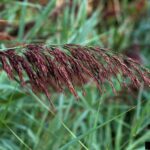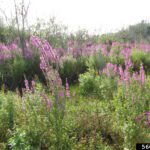Description:
When one thinks of a pristine, natural river, what is the first thing that comes to mind? For many in northwestern Michigan, that would be the Jordan River. From its remarkable scenic vistas in the hills of its headwaters, to the eagles and ospreys along the wide, marshy spreads of its mouth, the Jordan River fits that description perfectly. In fact, it was designated as Michigan’s first Natural River in 1972.
Paddlers on the Jordan River can enjoy an entire day floating over the river’s crystal-clear waters, surrounded by endless balsam firs, birches, and cedars. Nay a trip has ever been made without sighting elusive fish under the ripples, timid wildlife behind the brush of the banks, and majestic birds flying the river corridor.
Hikers in the Jordan River Valley can stretch their legs in the 18+ hilly miles of the Jordan River Pathway, managed by the Department of Natural Resources and North Country Trail Association. Wild leeks cover the ground as the trail winds through upland forests of white spruce, maple, beech, and ash. The trail descends fast clear streams and hillsides to go through lowlands of black spruce, balsam fir, and white cedar with black, organic soils and chirping frogs. It goes along the River, along tributaries, natural springs coming out of the hills, and along a flooding caused by beaver dams.
Although the upper sections of the Jordan River have some current and ripples in the water, the river slows and spreads out near the mouth. This area, called the Jordan River Spreads, contains hundreds of acres of marshes and wetlands; basically a freshwater estuary. Herons, egrets, and other waterbirds wade through the rushes, sedges, and cattails of the expansive emergent marshes. The City of East Jordan is located just outside of the Spreads.
Other Threats to Water Quality
- Nonpoint source pollution
- Eroding riverbanks
- Shoreline development
Monitoring
The Jordan River is monitored every three years through the Watershed Council’s Comprehensive Water Quality Monitoring (CWQM) Program for dissolved oxygen, specific conductivity, pH, nitrate-nitrogen, total nitrogen, total phosphorus, chloride levels, and total suspended solids.
Biological monitoring is also performed by volunteers in the Jordan River each spring and fall as part of the Watershed Council’s Volunteer Stream Monitoring (VSM) Program.
The Lake Charlevoix Watershed Management Plan and its Advisory Committee are working to protect the River, as it directly influences the water quality of the Lake.
Additional Resources:
Information about Threatened, Endangered, and Special Concern species in this stream’s watershed is available on the Michigan Natural Features Inventory (MNFI) website.
USGS Current Water Data for Michigan provides stream flow conditions.
A wide variety of maps, including Vegetation circa 1800, National Wetlands Inventory, Land Cover Change 1800’s to 1978, Wetland Change 1800’s to 1980, and many other resources for this area are available online in the Michigan Natural Features Inventory (MNFI) Data Resources page.
Learn about safely eating fish from this river in the Michigan Fish Consumption Advisory.
| Title | Link |
|---|
Insert map of Jordan river




